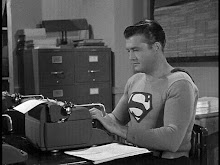Rob and I have spent the last two evenings working on cutting his horror film We had done the opening bits of the film a few weeks ago, but over the last two days we tackled the real bread and butter of the movie. The middle of the film has some important exposition in it, setting up some of the characters and the history of the town. But this is already after we've had a high-octane sequence, so the challenge became crafting the calmer scenes to match the energy of the more action-driven scenes. It became about finding the best patter to put into those dialogue-driven scenes. We hit upon the idea of overlapping different lines, crafting a more dynamic and more cohesive performance than the actors actually gave. It makes the scenes stand stronger on their own, and they fit much better into the overall flow of the narrative.
It's always the thing that's the most strange about editing a feature is that the editor can really craft the performance of the actors. The actors give strong performance that fit into the overall scenes. But some actors can not only give performances that fit into the moment of each scene, but also fit into the continuity of the entire film. Otherwise each scene takes on a full life but the overall film lacks flow. That is one of the real marks of a good film actor. Well, that, and an avoidance of something that I'm now calling "actor-time." In real life, we connect each action and movement into a single organic flow, but film actors sometimes give a performance that is a little too disconnected to feel truly "real." Working on this side of the editing deck has given me a secret as to what casting directors see, so I think of it as good on-the-job training.
Subscribe to:
Post Comments (Atom)

No comments:
Post a Comment